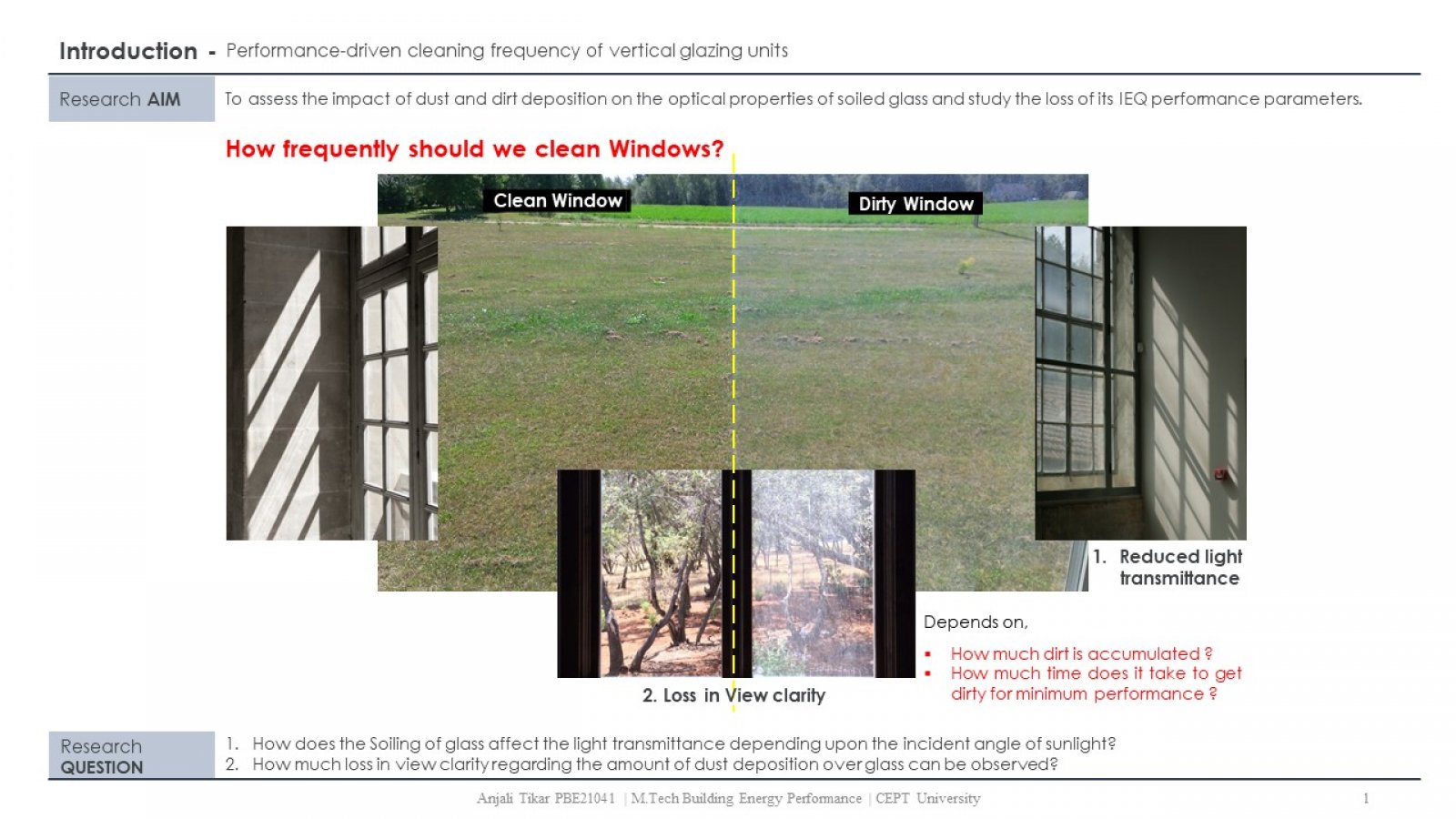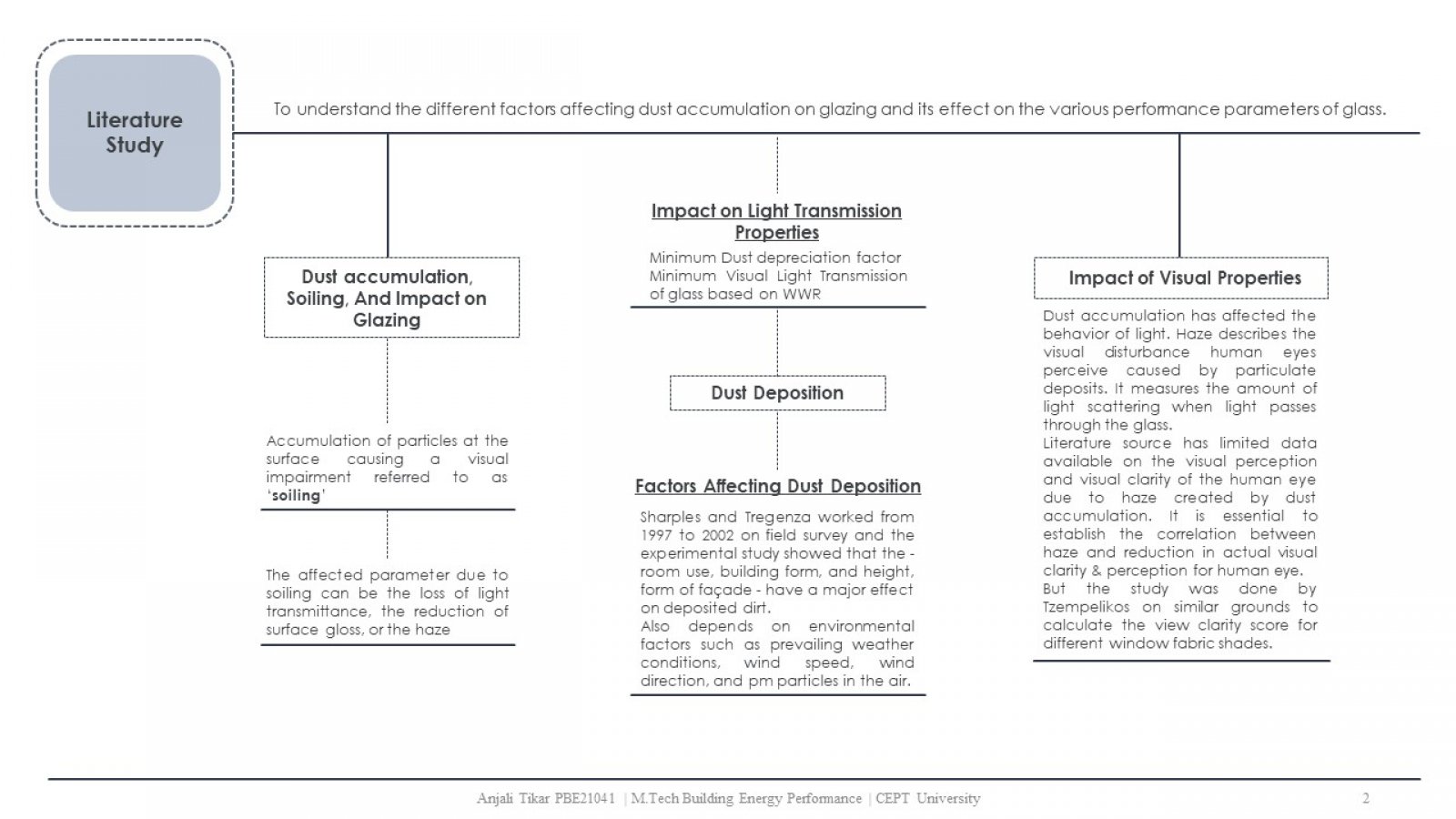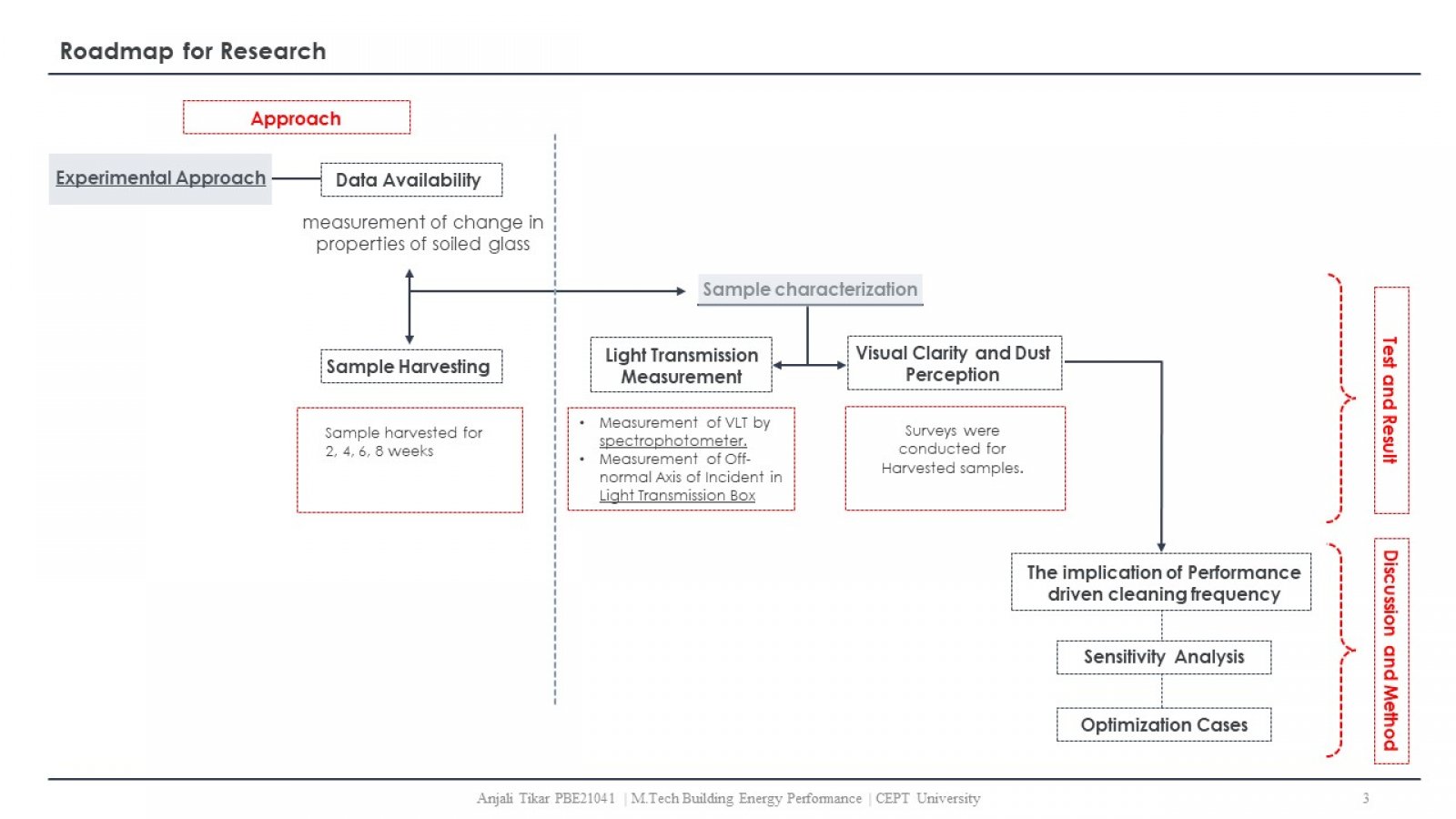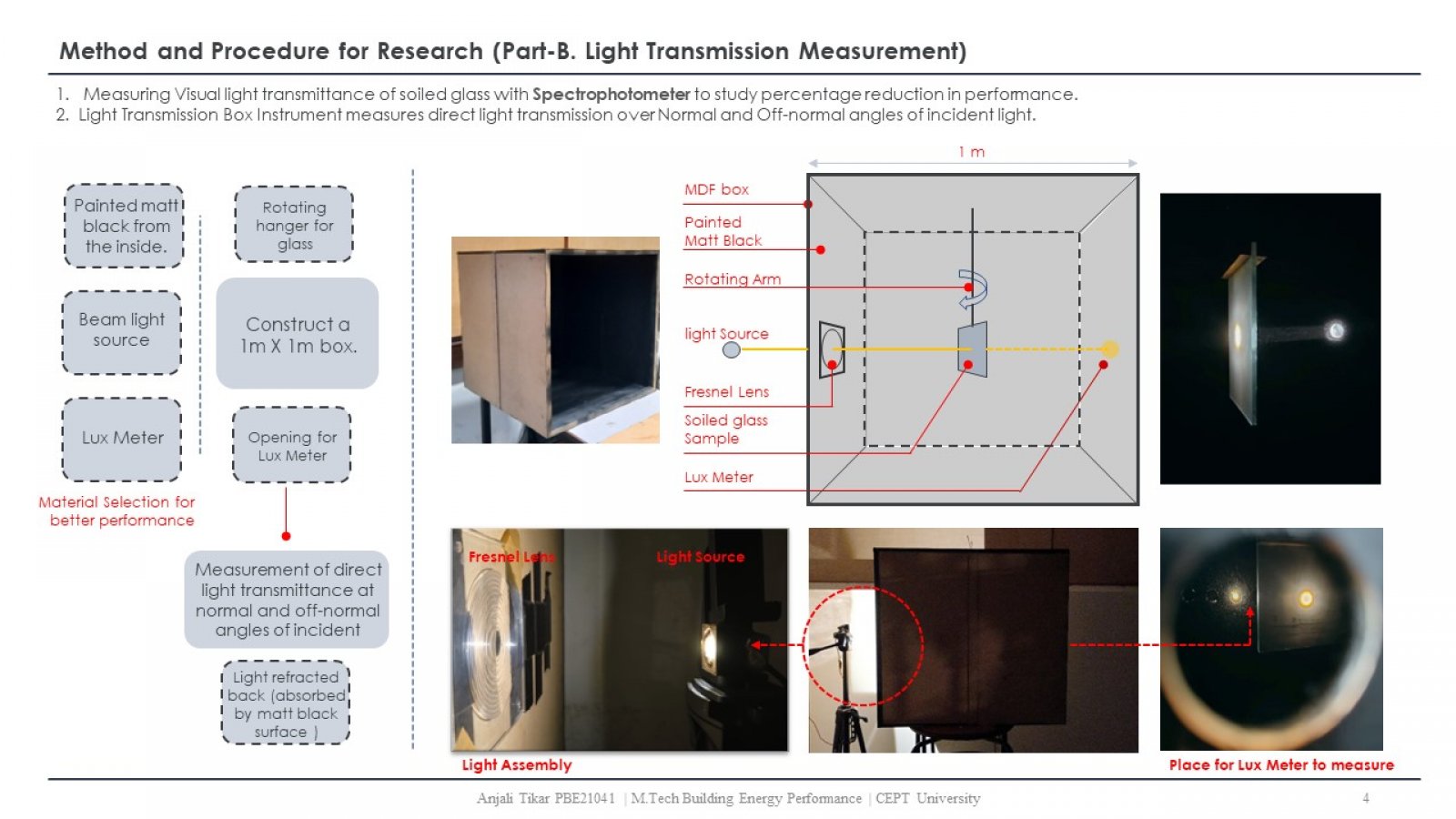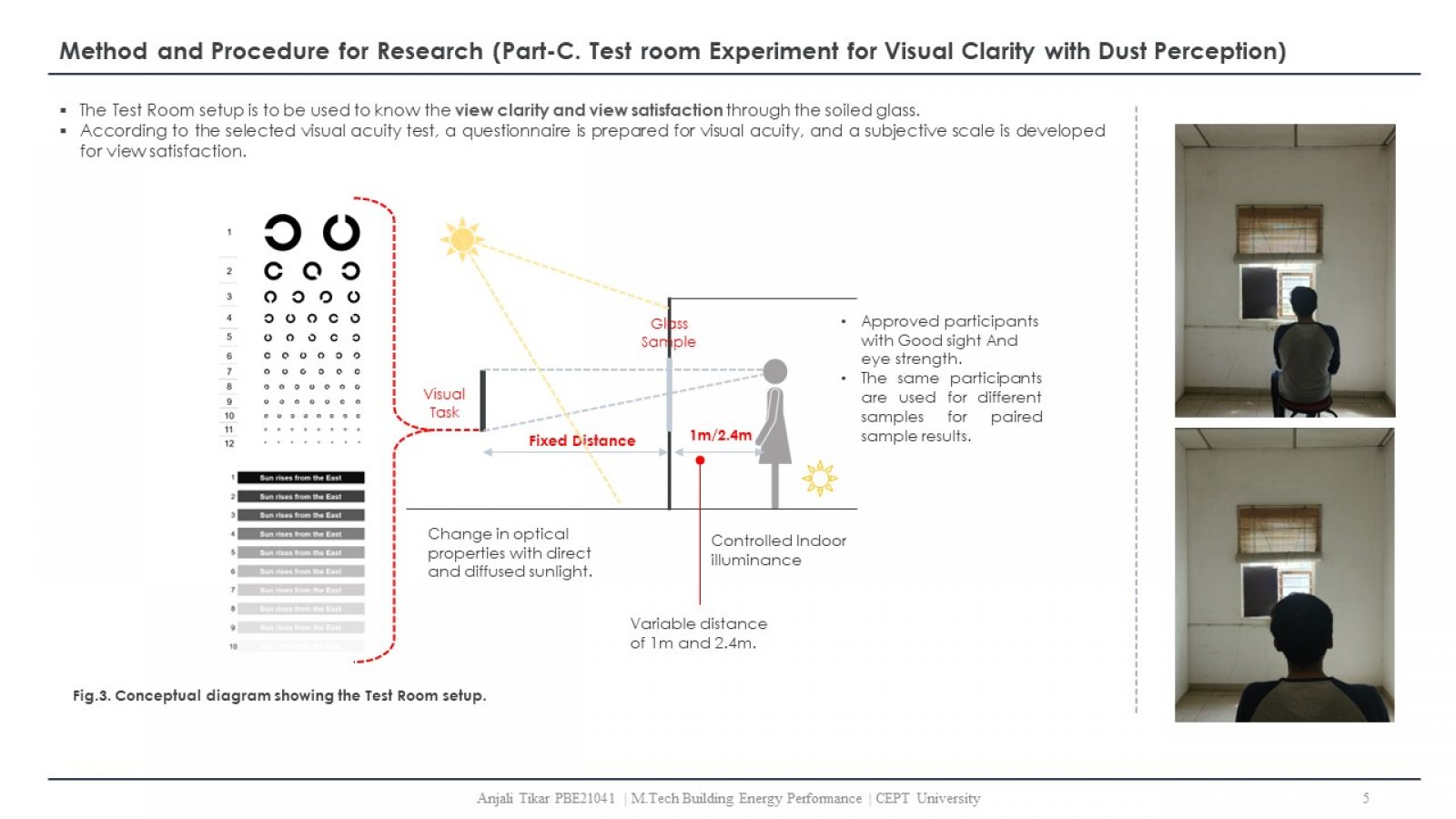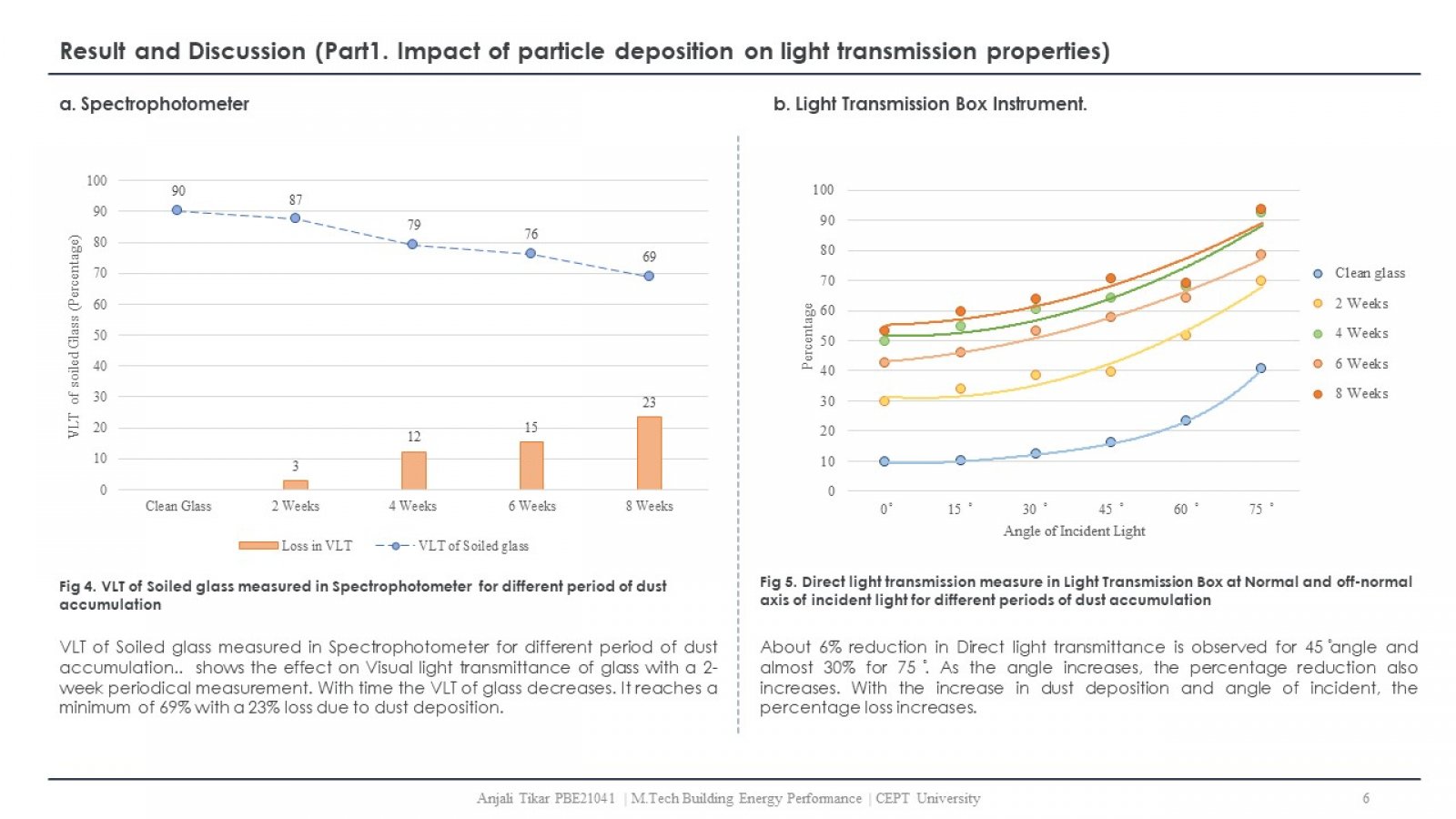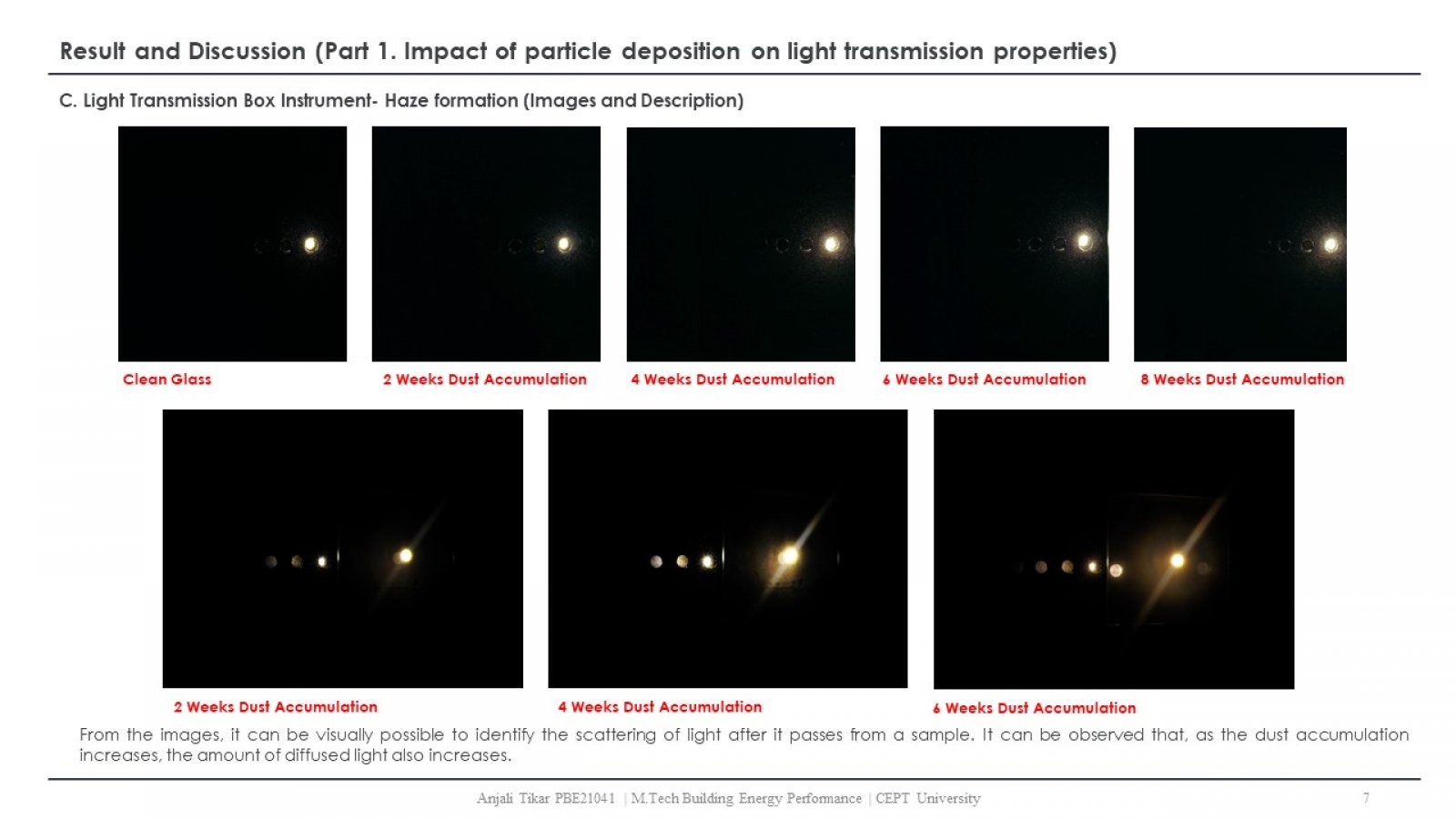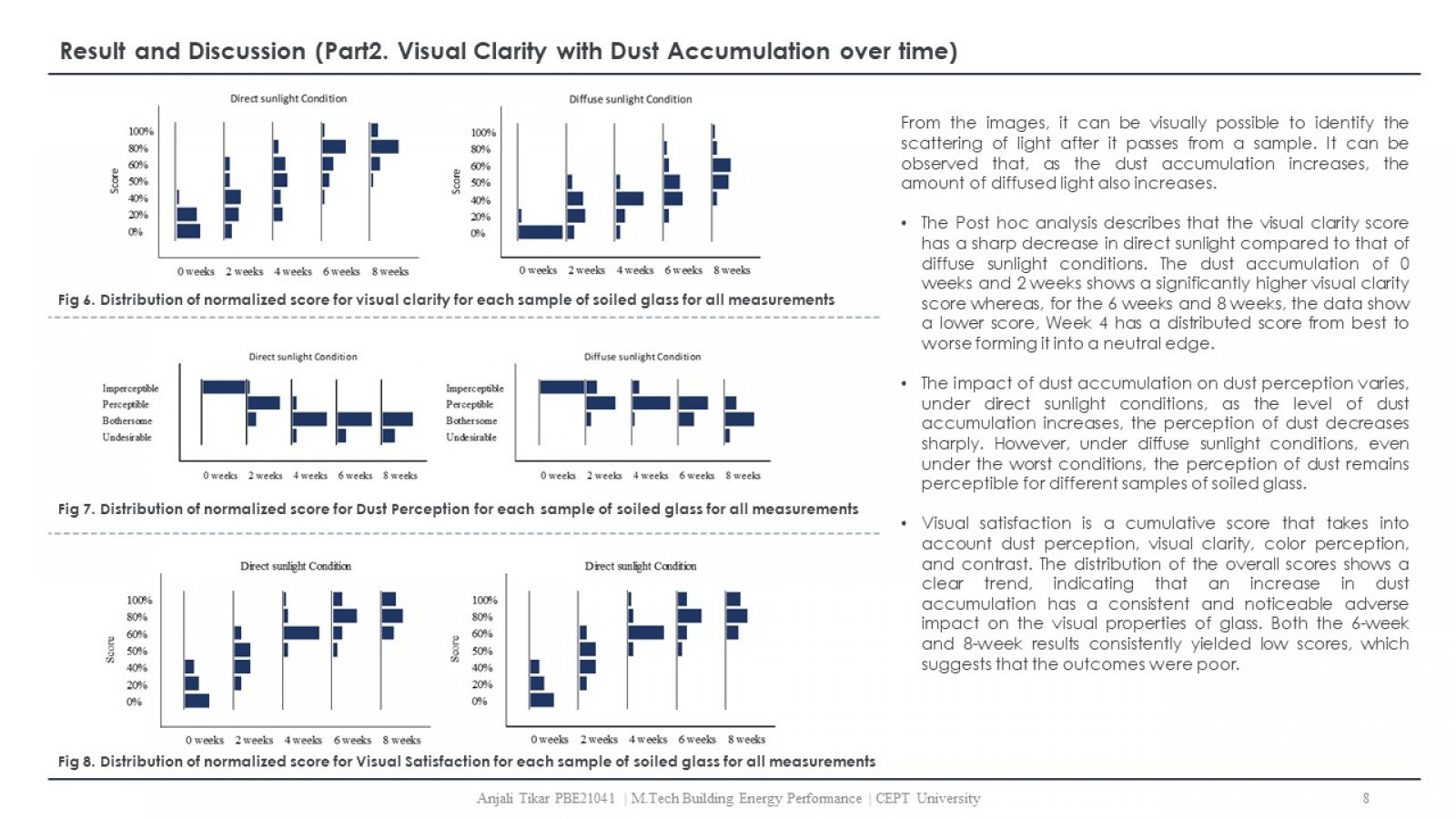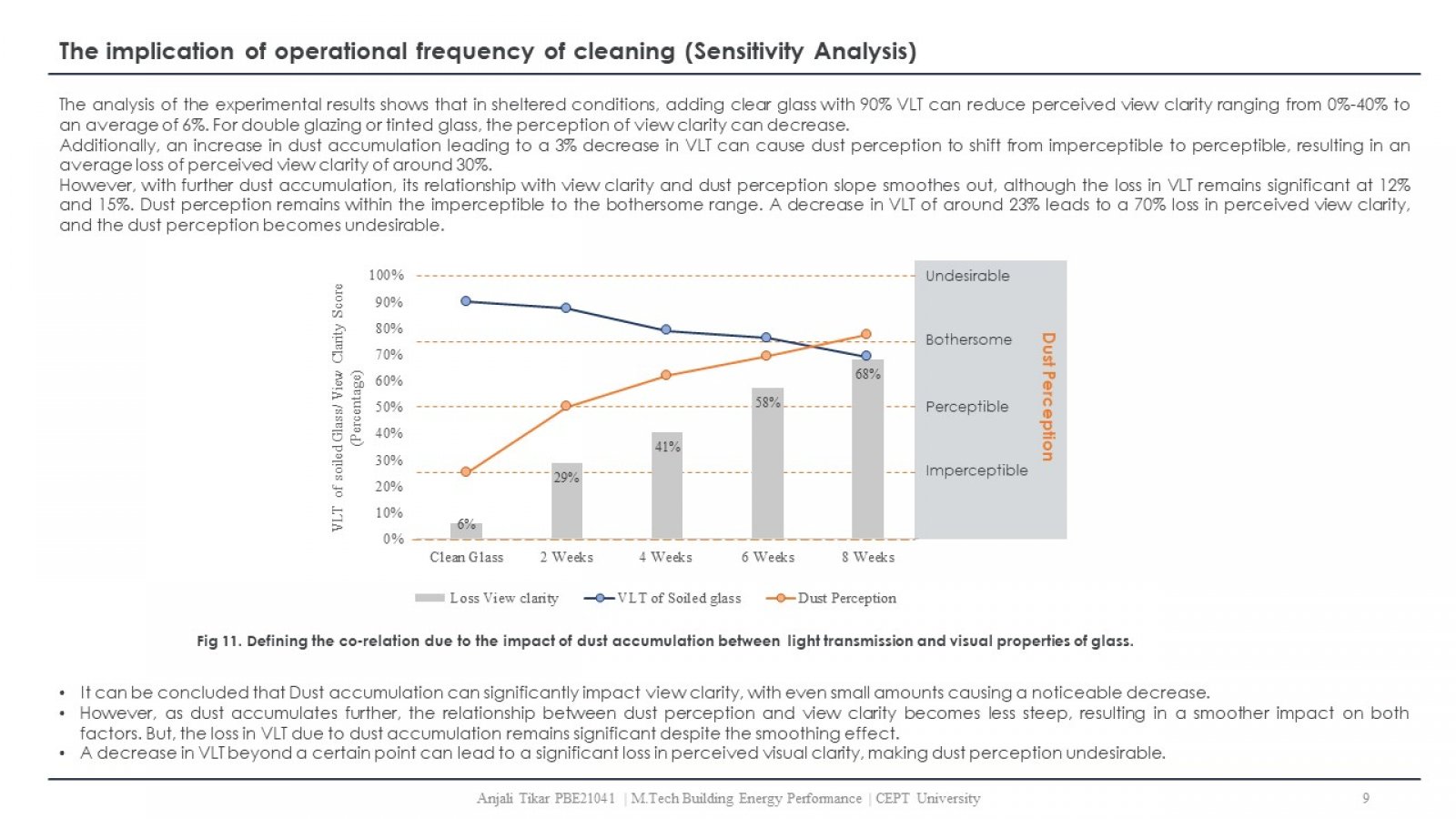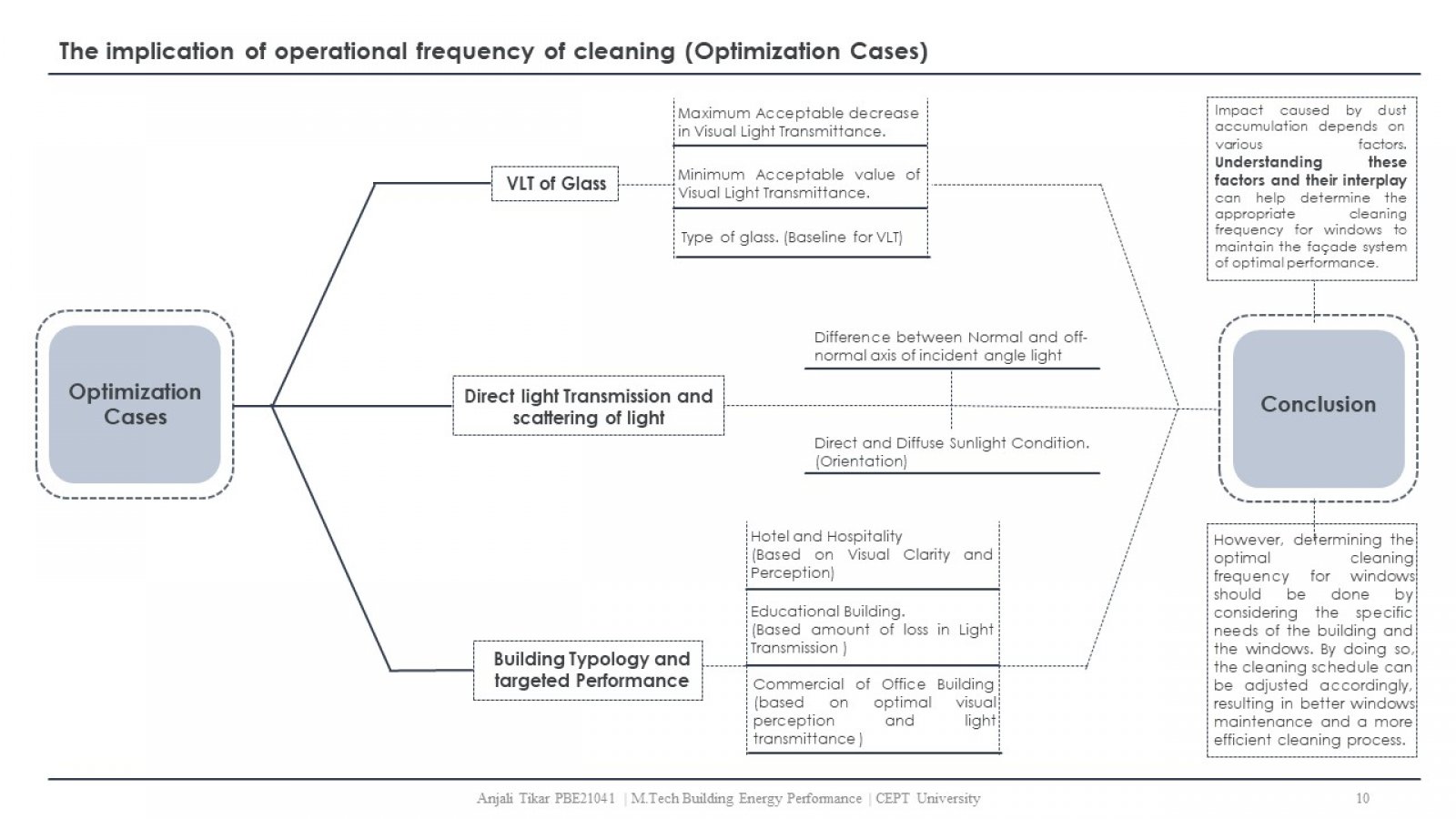Your browser is out-of-date!
For a richer surfing experience on our website, please update your browser. Update my browser now!
For a richer surfing experience on our website, please update your browser. Update my browser now!
Windows are an essential component of the building envelope; their primary function is to provide a visual connection with daylight and views to building occupants. Daylight availability in cities is reduced by air-borne pollutants, dirt, and dust deposition on building surfaces. Atmospheric attenuation removes some of the incoming visible radiation. Also, dirt and dust depositions can impede windows’ functions by reducing the quantity of daylight transmitted and view clarity. Until recently magnitude of dust accumulation was not known. A survey study of urban areas found that percentage loss in transmittance due to dirt deposition on windows was usually less than 10% (Sharples, 2000). The IES-LM-83-12 standard that works with Daylight Autonomy and light metrics specifies a dirt depreciation factor of 5% for vertical windows, 10% for sloped glazing (20? - 85? tilt), and 15% for skylights with less than 20? slope. Dust deposition may also reduce occupants’ satisfaction with the view. In spite of these losses, window cleaning schedules are largely driven by operational costs and maintenance-related norms. The proposed research project aims to suggest a window cleaning frequency based on performance to ensure optimal performance and a balance between occupants' satisfaction and optimized performance.
